The terms Old Catholic Church, Old Catholics, Old-Catholic churches or Old Catholic movement designate "any of the groups of Western Christians who believe themselves to maintain in complete loyalty the doctrine and traditions of the undivided church but who separated from the see of Rome after the First Vatican council of 1869–70".

Pope John Paul II was head of the Catholic Church and sovereign of the Vatican City State from 1978 until his death in 2005. He was later canonised as Pope Saint John Paul II.
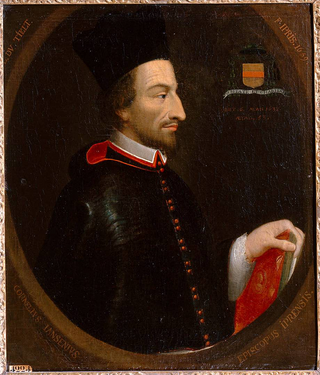
Jansenism was an early modern theological movement within Catholicism, primarily active in the Kingdom of France, that arose in an attempt to reconcile the theological concepts of free will and divine grace. Jansenists claimed to profess the true doctrine of grace as put forth by Augustine of Hippo. In 1653, Pope Innocent X promulgated the bull Cum occasione, which condemned five errors attributed to Jansenism, including the idea that Christ did not die or shed his blood for all men.
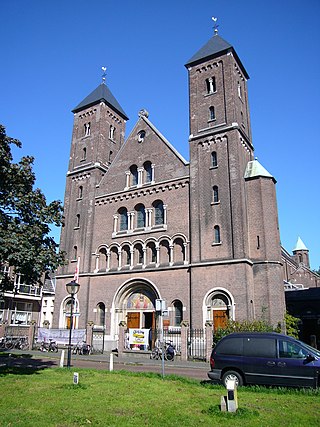
The Old Catholic Church of the Netherlands, sometimes Jansenist Church of Holland, is an Old Catholic jurisdiction originating from the Archdiocese of Utrecht (695–1580). The Old Catholic Church of the Netherlands is the mother church of the Old Catholic Union of Utrecht.
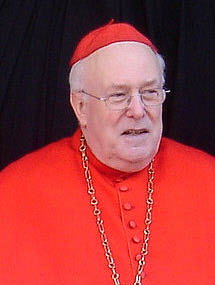
Godfried Maria Jules Danneels was a Belgian cardinal of the Roman Catholic Church. He served as the Metropolitan Archbishop of Mechelen-Brussels and the chairman of the episcopal conference of his native country from 1979 to 2010. He was elevated to the cardinalate in 1983. His resignation that he had submitted in 2008 at the age of 75 was accepted by Pope Benedict XVI on 18 January 2010.

Adrianus Johannes Simonis was a Dutch cardinal of the Catholic Church. He served as Archbishop of Utrecht from 1983 to 2007, and was made a cardinal in 1985.

Bernardus Johannes Alfrink was a Dutch Cardinal of the Roman Catholic Church. He served as Archbishop of Utrecht from 1955 to 1975, and was elevated to the cardinalate in 1960.

The Catholic Cathedral Church of St. John (Sint-Janskathedraal) of 's-Hertogenbosch, North Brabant, is the height of Gothic architecture in the Netherlands. It has an extensive and richly decorated interior, and serves as the cathedral for the bishopric of 's-Hertogenbosch.

The Catholic Church in the Netherlands is part of the worldwide Catholic Church under the spiritual leadership of the Pope in Rome. Its primate is the Metropolitan Archbishop of Utrecht, since 2008 Willem Jacobus Eijk. In 2015 Catholicism was the single largest religion of the Netherlands, forming some 23% of the Dutch people, based on in-depth interviewing, down from 40% in the 1960s.

The Catholic Church in Indonesia is part of the worldwide Catholic Church, under the spiritual leadership of the pope in Rome. Catholicism is one of the six approved religions in Indonesia, the others being Islam, Protestantism, Hinduism, Buddhism, and Confucianism. According to official figures, Catholics made up 3.12 percent of the population in 2018. The number of Catholics is, therefore, more than 8.3 million. Indonesia is primarily Muslim, but Catholicism is the dominant faith in certain areas of the country.
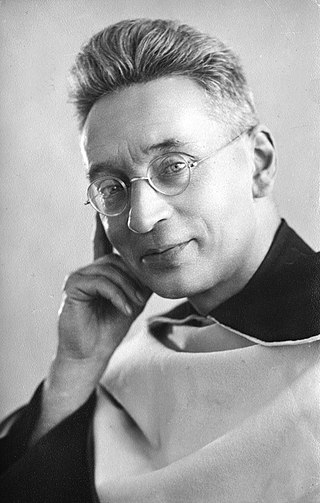
Titus Brandsma, OCarm was a Dutch Carmelite friar, Catholic priest and professor of philosophy. Brandsma was vehemently opposed to Nazi ideology and spoke out against it many times before the Second World War. He was imprisoned at the Dachau concentration camp, where he was murdered. He was beatified by the Catholic Church in November 1985 as a martyr of the faith and canonized as a saint on 15 May 2022 by Pope Francis.

Religion in the Netherlands was historically dominated by Christianity between the 10th and 20th centuries. In the late 19th century, roughly 60% of the population was Calvinist and 35% was Catholic. Since then, there has been a significant decline in both Catholic and Protestant Christianity, with Protestantism declining to such a degree that Catholicism became the foremost form of the Christian religion. The majority of the Dutch population is secular. Relatively sizable Muslim and Hindu minorities also exist.

Willem Jacobus "Wim" Eijk is a Dutch prelate of the Catholic Church, a cardinal since 2012. He has been the Metropolitan Archbishop of Utrecht since 2007. He was Bishop of Groningen-Leeuwarden from 1999 to 2007. Before his clerical career he worked as a doctor; as a priest he made medical ethics the focus of his academic studies.
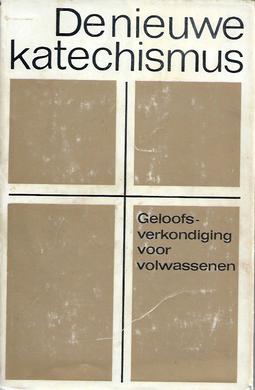
The Dutch Catechism of 1966 was the first post-Vatican II Catholic catechism. It was commissioned and authorized by the Catholic hierarchy of the Netherlands. Its lead authors were Edward Schillebeeckx OP, the influential Dominican intellectual, and Piet Schoonenberg, S.J., a professor of dogmatic theology at the Catholic University of Nijmegen.

Holy See–Soviet Union relations were marked by long-standing ideological disagreements between the Catholic Church and the Soviet Union. The Holy See attempted to enter in a pragmatic dialogue with Soviet leaders during the papacies of John XXIII and Paul VI. In the 1990s, Pope John Paul II's diplomatic policies were cited as one of the principal factors that led to the dissolution of the Soviet Union.

Holy See and Indonesia established diplomatic relations in 1950. Relations are important as part of global interfaith dialogue, because Indonesia has the world's largest Muslim-majority population. Indonesia recognizes Roman Catholicism as one of its six approved religions. The Holy See has a nunciature in Jakarta, while Indonesia has an embassy in Rome.

Catharina Joanna Maria Halkes was a Dutch theologian and feminist, notable for having been the first Dutch professor of feminism and Christianity, at the Radboud University Nijmegen from 1983 to 1986. A Roman Catholic who was originally schooled in Dutch language and literature, she became active in the women's movement within the church, and gained a measure of notoriety when she was forbidden to address Pope John Paul II during his visit to the Netherlands in 1985. She is considered the founding mother of feminist theology in the Netherlands.

The Lordship of Utrecht was formed in 1528 when Charles V of Habsburg conquered the Bishopric of Utrecht, during the Guelders Wars.
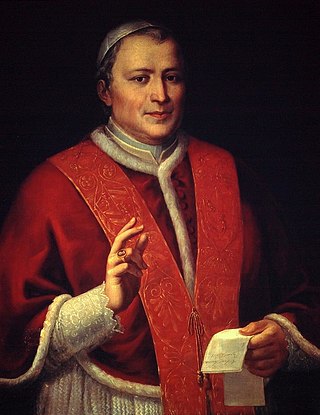
On 4 March 1853, Pope Pius IX restored the episcopal hierarchy in the Netherlands with the papal bull Ex qua die arcano, after the Dutch Constitutional Reform of 1848 had made this possible. The re-establishment of the episcopal hierarchy led to the April movement protest in 1853.

















